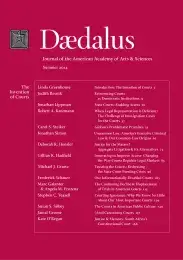Justice for the Masses? Aggregate Litigation & Its Alternatives
Traditionally, disputes over injury compensation that were brought to court involved one or a few plaintiffs and defendants and were processed individually. The risk and expense of such litigation meant that most victims of legally cognizable injuries never came through the courthouse doors. The modern global economy, however, has vastly increased the potential for mass harms and losses, and modern mass media have created felicitous circumstances for mass claiming. Aggregated mass litigation blasts open the courthouse doors for individuals who might otherwise find them closed. Aggregation benefits some but disadvantages others. Class action rules attempt to mitigate these conflicts, but such procedures do not apply to aggregate non-class litigation. It is time for courts to adopt rules and practices that recognize the realities of such litigation.
In the popular image of civil litigation, two parties face off against each other in a courtroom, a judge sits on high overseeing the process, and a jury decides who wins and who loses. Virtually nothing about this image is accurate today. Few lawyers or parties ever see the inside of a courtroom; the judge’s role is to manage rather than adjudicate; and the lawyers are more likely to be arguing about schedules, procedure, and evidence than about the substantive merits of the dispute. Most of the activity takes place in the judge’s and lawyers’ offices–or, increasingly, by videoconference–in the parties’ absence. The dispute most often ends either with a judge’s decision on a legal requirement or a compromise between the parties, rather than a judge or jury decision based on the merits of the issues presented in full. And increasingly, especially in complex and high-stakes cases, rather than one party suing another, hundreds or more plaintiffs seek a remedy from multiple defendants.
The growth of what has come to be known as “mass litigation”–which encompasses both class actions and aggregate non-class litigation–began several . . .
